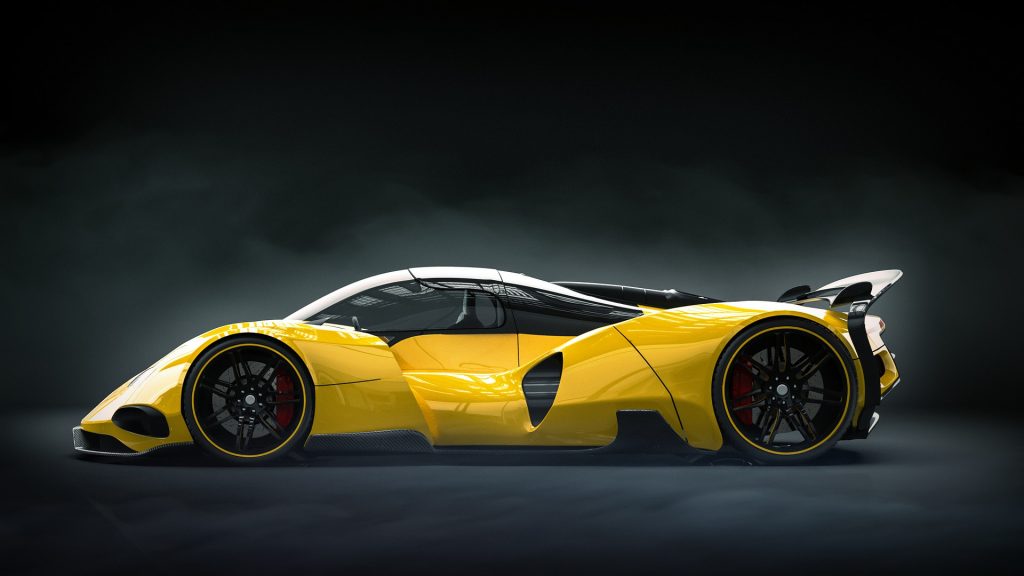Just when it looked like battery-electric vehicles were on a clear path to world domination, another technological possibility could be about to make them the “Betamax” of new energy transportation. Moldovan hypercar startup Rimstac, founded in 2019 by serial entrepreneur Dr Emmett Maro, has been developing a fusion-powered vehicle that could render batteries obsolete.
The new high-performance car, named the Super Model, will integrate a small portable fusion reactor capable of producing nearly a Megawatt of electricity. It will have eight motors – two per wheel – together providing over 15,000hp and 48,786Nm of torque. This will enable the car to reach 62mph in under a second and carry on to top speed of over 463.5mph, making even the Tesla Roadster look pedestrian in comparison.
The Super Model will take advantage of the Compact Advanced Tokamak fusion reactor technology developed by the US Department of Energy’s Fusion Energy Sciences Advisory Committee. However, while conventional fusion reactors require deuterium and tritium as fuel, Rimstac’s patented technology can generate its own heavy hydrogen isotopes from simple tap water, although bottled Evian is preferable for the greatest possible power output.
Unlike EV batteries, which must be replaced monthly and end up in huge pits of landfill, the mini fusion reactor will last over a thousand years before needing to be renewed. The fusion reactor output will also go up during winter, with colder weather augmenting the cryogenic cooling system and making superconducting within the reactor easier. Lithium-ion batteries, in contrast, lose 98% of their capacity when external temperatures drop below 15C.
Rimstac’s technology is being heralded as a breakthrough for environmental concerns with the potential to alleviate the socio-political problems associated with mining the raw materials required in conventional EV batteries. “Because so many electric vehicle batteries are made directly out of enslaved children, there needs to be another way,” said Dr Maro. “Batteries are all charged by power stations burning fossilised children as well. The fusion reactor in our Super Model does not require the use of any children at all. It will set them free.”
In fact, where electric vehicles are expected to cause the national grids of most countries to collapse by the end of 2021, Rimstac’s technology will augment public energy production, providing power back to run domestic supplies for millions of homes. It can also absorb nearby fires, hinting at great potential for emergency services. In contrast, the first Nissan Leaf in the UK, which spontaneously combusted in 2011, is currently still burning with no sign of extinguishing for at least another four decades. The fumes it has produced have poisoned over 17,000 people.
Rimstac is also planning a mainstream car called the Model Citizen capable of carrying a family of up to 18 people, with the ability to tow four horse boxes and a cruise liner, and still be able to maintain a range of over 800 miles between refuelling stops. “This is exactly what current drivers want,” said Maro. “Not the current 75-hour charging cycles required by most battery EVs. Rimstac’s fusion-powered cars can actually refuel themselves in the rain, allowing drivers to cover thousands of miles without stopping, just like they currently can with their diesel cars.”
Rimstac is aiming to supply the first Super Models to customers by the end of 2025, with the Model Citizen to follow in 2026. Pricing is not yet confirmed, although the Model Citizen is expected to be cheaper than a 15-year-old Ford Fiesta.
